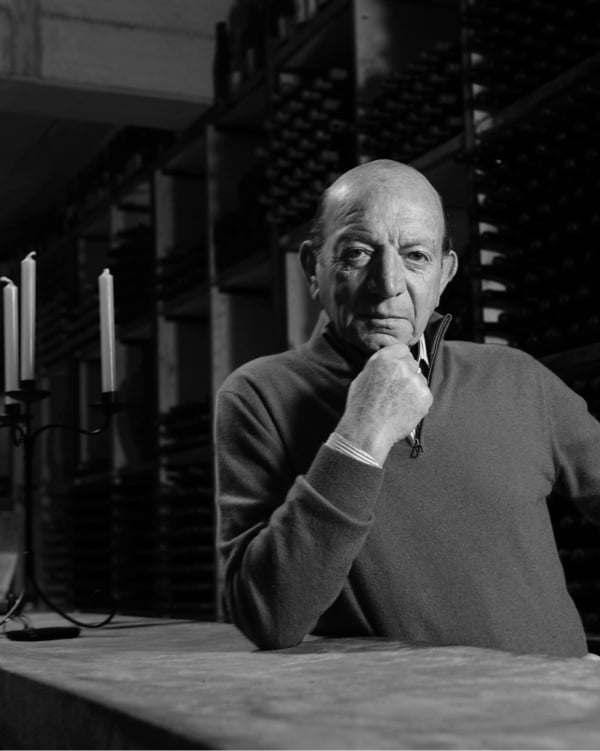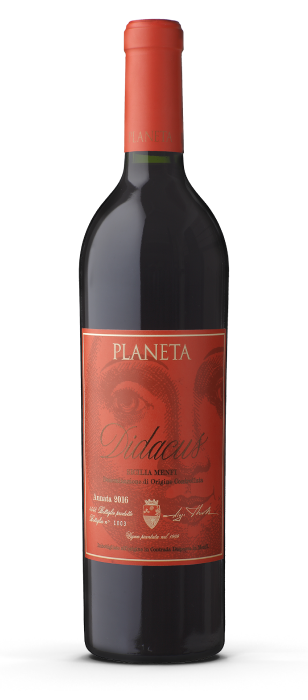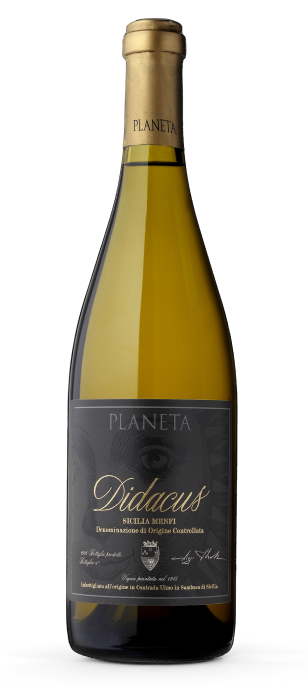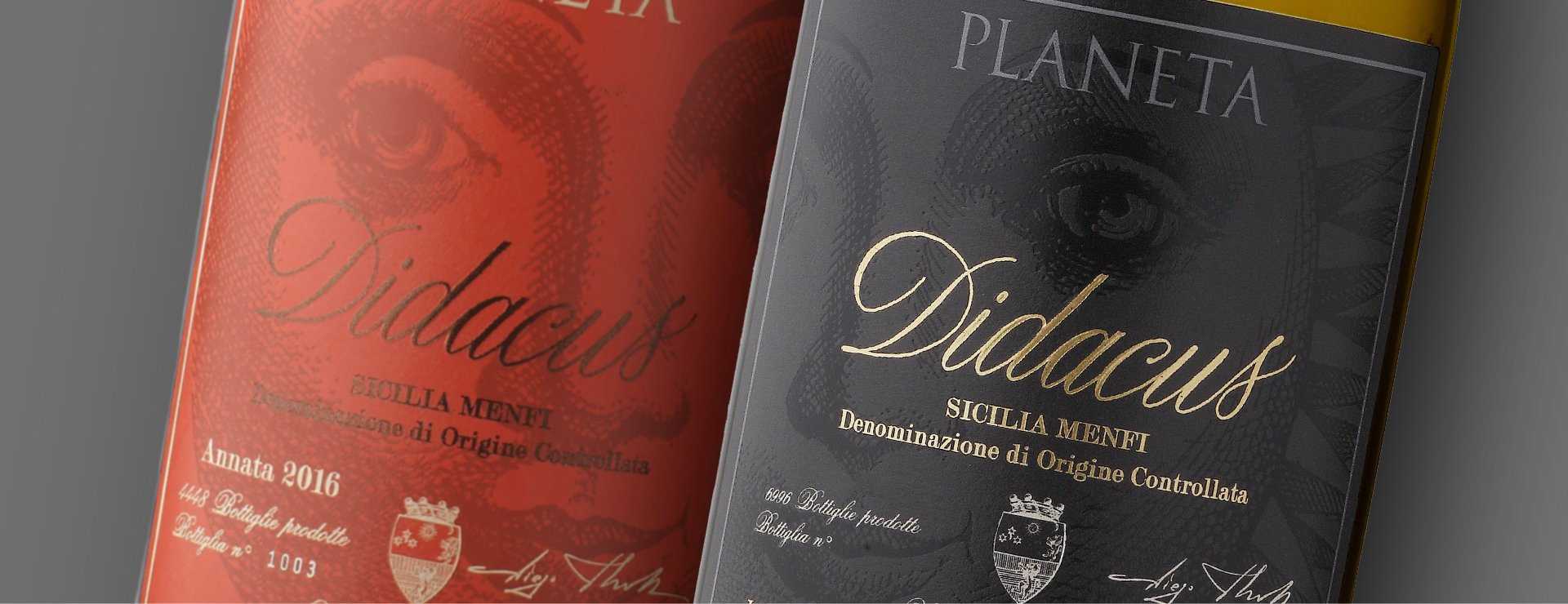As anyone who knew him well will know, Diego Planeta’s vision always had a decade as his smallest unit of measurement, and a generation as his nearest horizon. In the mid-1980’s he had no problem persuading his brothers and sisters, as they all trusted him implicitly, to plant the first rows of Chardonnay vines and other ‘non conventional’ varieties. His first objective was to initiate a production for the following decade which would excel in the range of Sicilian wines and, as he liked to say, ‘would put Sicily once again on the map’.
Didacus
The origin
But very clearly in his mind there was a second and still more ambitious objective which he had tacitly entrusted to the next generation, that of his children, his nephews and nieces: to produce wines aimed at competing on the world stage, among the great wine regions in which Sicily was fully entitled to participate.
This legacy from 2014 has become Didacus – from the nickname given by his beloved father to Diego – a wine dedicated to the founder and his vision, to this most difficult and most inspiring challenge.

Diego
Diego Planeta was born at Palermo on 2nd February, the day of the Candelora, 1940. After the war he studied at and graduated from the Istituto Agrario of Catania, and at the end of the 1950’s he began working with the agricultural activities of the family firm at the side of his much loved father Vito, who had founded the Cantina Sociale Settesoli at Menfi in 1958.
In 1967 he founded S.I.S. at Vittoria (RG), a firm which took over the Centro SEIA and today possesses an excellent reputation in the sector of agricultural services and in tomato production.
In 1972 he succeeded his father Vito in the chairmanship of Settesoli – an elective role which he undertook for 38 consecutive years, rendering it a point of reference in the sector of co-operative agriculture, and representing the progressive leader of the whole of the Valle del Belice.
On the death of his father in 1975 he began to administer the individual agricultural properties of his six brothers, an enterprise which in the 1990’s led to the creation of a single family firm.
Between 1975 and l995 the transformation of the firm was completed, which had been chiefly livestock, cereal and citrus cultivation, and became a modern entity principally of wine and olive oil production, going through horticulture and always favouring the bravest type of experimentation. From post-Riforma Agraria landed estate to a modern agricultural business.
In 1985 he was appointed President of the Istituto Regionale della Vite e del Vino. In this role, held until 1992, he achieved what was probably his magnum opus, also because it benefitted the whole of the co-operative. Thanks to working partnerships with people of the calibre of Giampaolo Fabris, Attilio Scienza, Giacomo Tachis – to mention just a few – he completely revolutionised Sicilian wine production in a very few years, making available to all the producers an invaluable heritage of experimentation, market research and very clear strategic vision.
This was a very real model of development, without which the sector would very probably have been subjected to an irreversible decline and which instead allowed growth and success.
Between the end of the 1980’s and the beginning of the 1990’s he decided to launch the family wine company, and to entrust it to the next generation, in particular to his nephew Alessio, born in 1966, who for years had worked beside him in the family’s agricultural activities. Soon afterwards his daughter Francesca was included, and then his nephews Marcello and Santi and his niece Chiara.
Among official recognitions received over the years, we like to remember those which were to him the greatest source of pride. First of all in 2004 he was named Cavaliere del Lavoro by the President of the Republic Carlo Azeglio Ciampi, in the same year he was awarded the honorary degree of laurea honoris causa in Scienze Tecnologie Agrarie of Palermo, the first ever given by the Faculty, and in 2003 he was nominated to the Accademico dei Georgofili.
Diego Planeta ceased to look after either agriculture or his family on Saturday 19th September 2020, very early in the morning, at Menfi.



